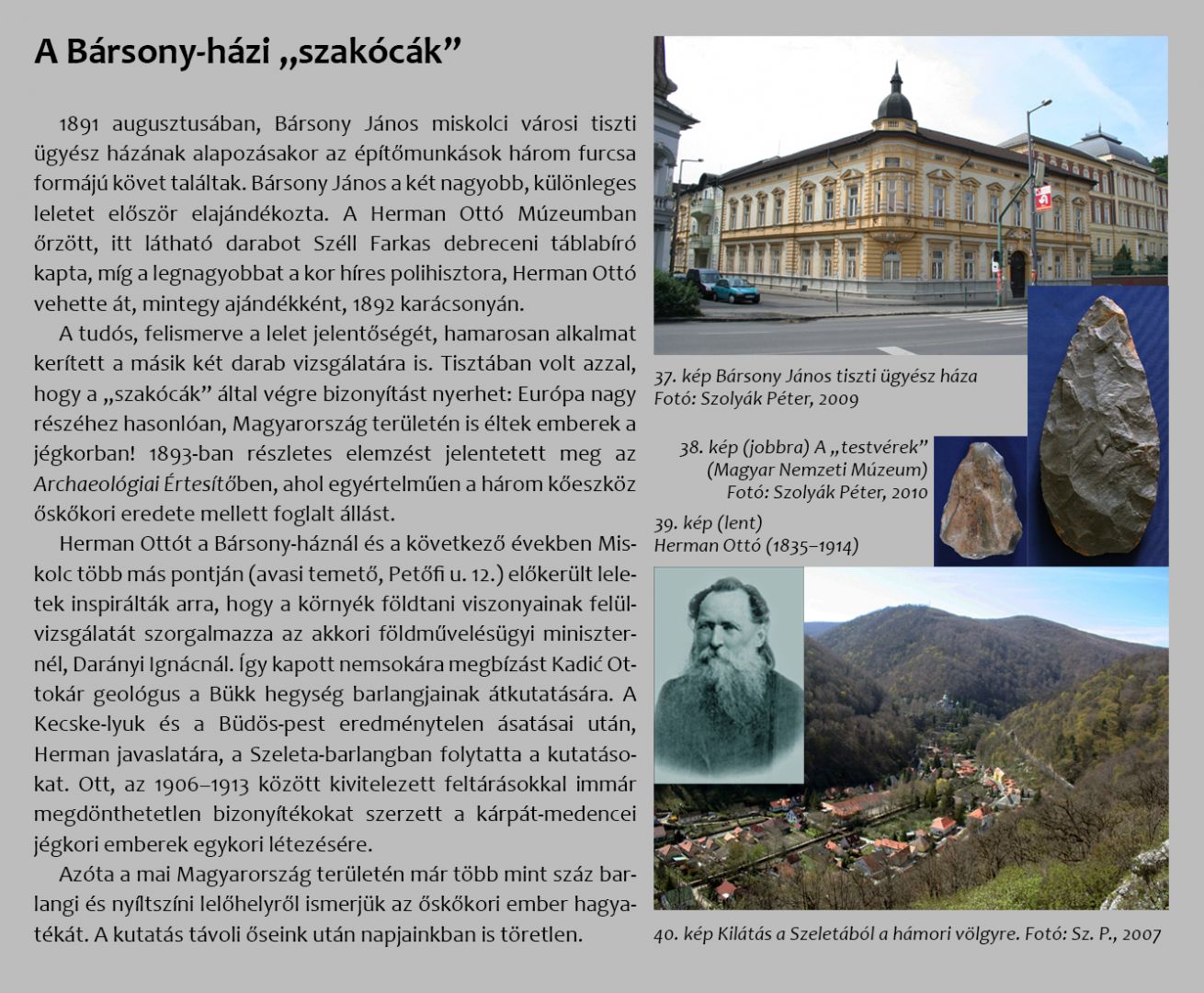THE RUDAPITHECUS AND THE EVOLUTION OF MANKIND
“Handaxe” of the Bársony House
In August, 1891, while making the basement of János Bársony solicitor’s house, the construction workers found three oddly shaped stones. János Bársony first gave away the two larger of the special finds. The piece, presented here in the Herman Ottó Museum got to Farkas Széll judge of the County Court of Debrecen, while the biggest one was taken over by Ottó Herman as a gift on Christmas of 1892.
The scientist, recognizing the significance of the find, soon found an opportunity to the examination of the other two pieces. He was well aware that with these “handaxe” human presence in Hungary in the Ice Age – like in other parts of Europe – can be finally proved! He published a detailed analysis in the Archeológiai értesítő (journal), where he took a stand on the three stone tools being from the Palaeolithic age.
Ottó Herman was encouraged by the finds of the Bársony House and by pieces found elsewhere in Miskolc (Avas cemetery, 12 Petőfi street) in the next few years to urge the research on the geological circumstances of the neighbouring area from Ignác Darányi current Minister of Agriculture. As a result, Ottokár Kadić geologist got an assignment to research the caves of Bükk Mountain. After unsuccessful excavations of Kecske-lyuk and Büdös-pest (caves), to the proposal of Ottó Herman he continued his research in Szeleta Cave. With the excavations, conducted between 1906 and 1913, he obtained irrefutable evidence of the existence of Ice Age men in the Carpathian Basin.
Since then, we know the legacy of the Palaeolithic man from more than a hundred sites both cave- and open cast. The research on our distant relatives is continuing with undiminished energy.
Fig. 37 János Bársony solicitor’s house. Photo by Péter Szolyák, 2009
Fig. 38 (right) The “brothers” (Hungarian National Museum). Photo by Péter Szolyák, 2010
Fig. 39 (below) Ottó Herman (1835-1914)
Fig. 40 View from Szeleta Cave to Hámor Valley. Photo by Péter Szolyák, 2007
